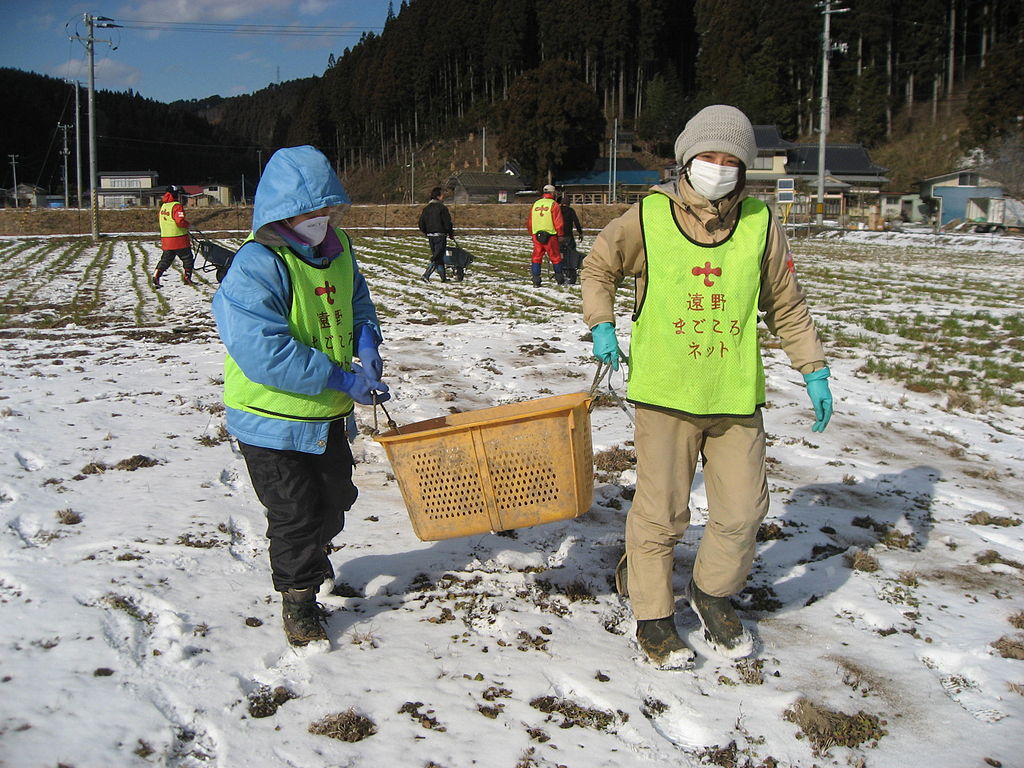Oct 30, 2017
Kobe Gives Birth to Spirit of Volunteerism in Japan

On January 17, 1995, the Great Hanshin earthquake struck Kobe and over 6,000 people lost their lives. In the aftermath of the disaster it is estimated that over one million volunteers came forward to provide help to those in need. While that does not sound remarkable in light of recent modern disasters it was unprecedented in Japan, a country that did not have a strong culture of volunteerism at the time.
Contrast that to the United States, which has the highest rate of volunteerism in the world. Over 56% of Americans, nearly 200 million people, engage in some sort of volunteer work during the year. What are the reasons for this?
The United States was founded as the world’s first experiment in representative democracy. For almost 250 years the country’s philosophy is that the “people” come first, not the government. In almost every other country in the world, the government is supreme. A couple of centuries of rule by the people pales in comparison to a couple thousand years of government by a ruling class, as experienced in Japan. People in Japan are used to having the government take care of those in need.
Another factor is religion. Much of American volunteerism comes out of churches and synagogues where the practice has become internalized among the congregations. Japanese philosophy centers around service and sacrifice with less of a “give-to-get” ethos.
Volunteerism in Japan before the Hanshin Earthquake
Volunteerism was not unheard of in Japan before the devastating earthquake. There were 60,738 volunteer groups in the country according to the Japanese Council of Social Welfare. Their efforts were small and largely unseen.
But the extreme loss of life and $100 billion in property damage in Kobe after the tremors was largely seen as a failure of government in disaster preparedness and response. When Japanese citizens saw prolonged delays by reconstruction and aid crews, they stepped forward in waves to help. Many were young people who traveled hundreds of miles to Kobe. Publications in Japan called the effort “Year One of the Volunteer Age” and trumpeted a “volunteer revolution.”
The spirit of volunteerism spurred activism. In 1998 the Law to Promote Specific Non-Profit Activities was passed. This gave volunteer organizations in Japan official legal status. One of the reasons volunteerism in the United States is so prevalent is due to the financial aid and tax breaks federal, state, and local governments give to non-profit organizations. Now Japan has an equivalent financial mechanism. By 2003, the number of volunteer groups in the country had jumped to over 118,000 and the number of registered non-profit organizations tripled.
More Than Just Numbers
The volunteer revolution that started in Kobe has made inroads into Japanese civil society. When the Great East Japan Earthquake struck in 2011, there was no waiting around for a government response. Within hours, disaster volunteer centers directed by local social welfare council offices were on site. Local and national government agencies were co-ordinating disaster relief with volunteer civic groups.
Japanese citizens were also making generous private donations of money that were funneled into disaster relief non-profit organizations. What had been a hit-and-miss volunteer relief effort in Kobe 16 years earlier had evolved into an integrated system of relief efforts among voluntary and government agencies. The seeds of volunteerism sown in the disaster of the Great Hanshin earthquake had sprouted.
By ともあず (Own work) [CC BY-SA 3.0], via Wikimedia Commons


About the author